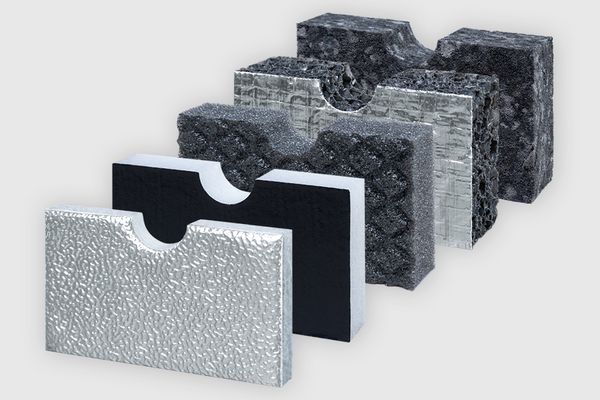Hertz (Hz) – The unit of measurement for sound frequencies
The unit Hertz (Hz) describes the frequency of sound waves and indicates how many vibrations occur per second. Frequency plays a decisive role in acoustics and sound insulation, as different materials have different sound insulation and sound absorption properties depending on the Hertz range.
How does Hertz influence acoustics?
Sound frequencies are divided into three ranges:
- Low-frequency sound (below 250 Hz) – Example: machine noise, bass sounds, traffic noise
- Mid-frequency sound (250 – 2000 Hz) – Example: speech, music, office noise
- High-frequency sound (above 2000 Hz) – Example: hissing, ringing, shrill tones
Lower frequencies are more difficult to insulate because they can travel further and penetrate walls. Higher frequencies are easier to reduce with sound absorbers and acoustic panels.
Cellofoam sound insulation solutions for different Hertz ranges
Cellofoam offers special sound insulation products for different frequency ranges to enable targeted noise reduction:
✔ Low-frequency noise – heavy foils & structure-borne sound insulation,
e.g. for machines, vehicles, heat pumps, compressors, generators
✔ Mid-frequency range – acoustic foams & acoustic fleeces made of PES,
e.g. for offices, classrooms, control cabins, switch cabinet housings
✔ High-frequency noise – sound absorbers with open-cell structure,
e.g. for conference rooms, recording studios, clean rooms, laboratory areas

Why is frequency in hertz important for sound insulation?
Different sound insulation measures must be taken depending on the application. While low-frequency sound is often reduced by mass and sound insulation, high frequencies require targeted sound absorption.
- Heat pumps & air conditioning technology – use compressor covers, pipe insulation and air duct linings to reduce operating noise
- Vehicle & mechanical engineering – soundproofing capsules, heavy foils and anti-drumming solutions to minimise structure-borne noise and vibrations
- Medical technology – noise insulation for devices such as CT scanners or treatment units to improve patient comfort
- Household appliances – sound-insulating casings for washing machines, refrigerators or ventilation units to comply with emission standards
- Office & room acoustics – Optimise speech frequencies (500–2000 Hz) with acoustic panels
- Building acoustics & industry – Reduce low-frequency machine noise with structure-borne sound insulation
- Recording studios & home theatres – Minimise high-frequency reflections with acoustic foam
Conclusion
Frequency in hertz (Hz) is a decisive factor in the effectiveness of soundproofing measures. Cellofoam's high-quality sound absorbers and sound insulation materials can be used to reduce specific sound frequencies – for optimal room acoustics and noise reduction.
✉ Contact us for individual advice on frequency optimisation and soundproofing solutions!









